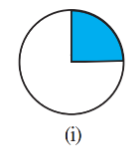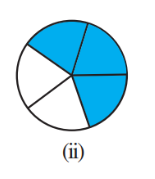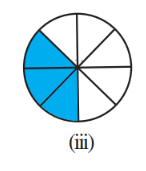Class 7 Maths Chapter 7 Questions and Answers - Free PDF Download
FAQs on NCERT Solutions For Class 7 Maths Chapter 7 Comparing Quantities Exercise 7.1 - 2025-26
1. Where can I find accurate, step-by-step NCERT Solutions for Class 7 Maths Chapter 7 for the 2025-26 session?
You can find reliable and detailed NCERT Solutions for Class 7 Maths Chapter 7, Comparing Quantities, on Vedantu. These solutions are meticulously prepared by expert teachers and are fully aligned with the latest CBSE 2025-26 syllabus, providing the correct method for solving every problem in the textbook.
2. What are the main concepts covered in NCERT Class 7 Maths Chapter 7, Comparing Quantities?
Chapter 7, Comparing Quantities, primarily focuses on methods to compare different numerical values. The key concepts you will learn are:
Ratios and Percentages: Understanding equivalent ratios and converting between fractions, decimals, and percentages.
Percentage Change: Calculating percentage increase or decrease in various contexts.
Profit and Loss: Using percentages to find profit, loss, cost price (CP), and selling price (SP).
Simple Interest: Calculating interest on a principal amount over a period of time.
3. What is the correct method for finding the ratio of two quantities as per the NCERT solutions?
To find the ratio of two quantities correctly, you must follow these steps: First, ensure both quantities are in the same unit (e.g., convert metres to centimetres or paise to rupees). Next, write the two quantities as a fraction. Finally, simplify the fraction to its lowest terms. For example, the ratio of 50 paise to ₹5 is found by converting ₹5 to 500 paise, giving the ratio 50:500, which simplifies to 1:10.
4. How do you solve problems involving the conversion of a ratio to a percentage?
The step-by-step method to convert a ratio to a percentage is straightforward. First, write the ratio as a fraction. For a ratio a:b, the fraction is a/b. Then, multiply this fraction by 100 and add the percentage symbol (%). For example, to convert the ratio 2:5 to a percentage, you calculate (2/5) × 100, which equals 40%.
5. What are the key formulas used in Chapter 7 for calculating profit, loss, and simple interest?
The NCERT solutions for this chapter use several important formulas:
Profit = Selling Price (SP) - Cost Price (CP)
Loss = Cost Price (CP) - Selling Price (SP)
Profit Percentage = (Profit / CP) × 100
Loss Percentage = (Loss / CP) × 100
Simple Interest (SI) = (Principal × Rate × Time) / 100
6. Why is it crucial to ensure quantities are in the same units before comparing them as a ratio?
It is crucial because a ratio is a comparison of magnitudes, and this comparison is only meaningful if the units are identical. For instance, comparing 2 kg to 500 grams directly is misleading. By converting 2 kg to 2000 grams, you can form a correct ratio of 2000:500, or 4:1. This ensures you are comparing 'like with like', which is the fundamental principle of forming a valid mathematical ratio.
7. How do the NCERT Solutions for Chapter 7 help in solving complex word problems on profit and loss?
The NCERT Solutions help by breaking down complex word problems into simple, understandable steps. They show you how to:
Identify the Cost Price (CP) and Selling Price (SP) from the problem statement.
Choose the correct formula based on whether it's a profit or a loss scenario.
Substitute the values correctly and perform the calculation accurately.
This step-wise approach builds a strong problem-solving methodology, reducing errors in exams.
8. What is the fundamental difference between a ratio and a fraction in the context of this chapter?
While mathematically similar, their application differs. A fraction typically represents a part of a whole (e.g., 3/4 of a cake). A ratio, on the other hand, compares two distinct quantities (e.g., the ratio of apples to oranges is 3:4). The key difference is the context: a fraction is about a single entity, while a ratio compares two separate entities.
9. How can the concept of percentages from this chapter be applied to real-world scenarios like calculating discounts?
Percentages are extremely useful in real life. For example, to calculate a discount, you convert the percentage to a fraction or decimal and multiply it by the original price. If a shirt costs ₹800 and has a 20% discount, the discount amount is (20/100) × 800 = ₹160. The final selling price would be ₹800 - ₹160 = ₹640. This same principle applies to calculating taxes, tips, and interest.
10. What is a common mistake students make when calculating Simple Interest, and how do NCERT solutions prevent it?
A common mistake is using the 'Time' variable incorrectly, especially when it's given in months or days. The rate of interest is usually annual, so the time must also be in years. For example, if the time is 6 months, it must be written as 6/12 or 0.5 years in the formula. NCERT solutions explicitly show this conversion step, reinforcing the correct method and helping students avoid losing marks for this common oversight.






















